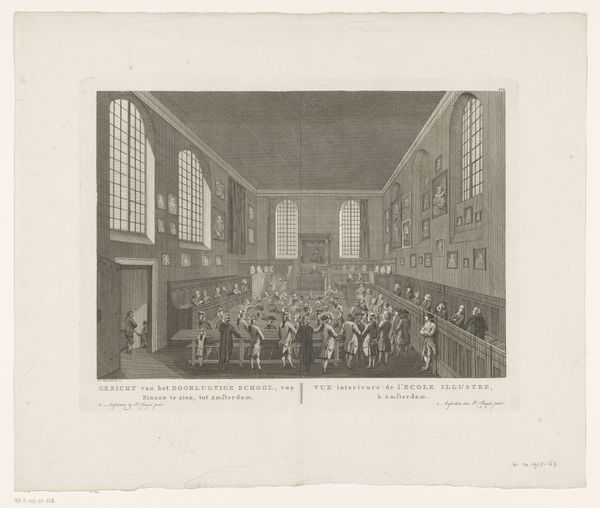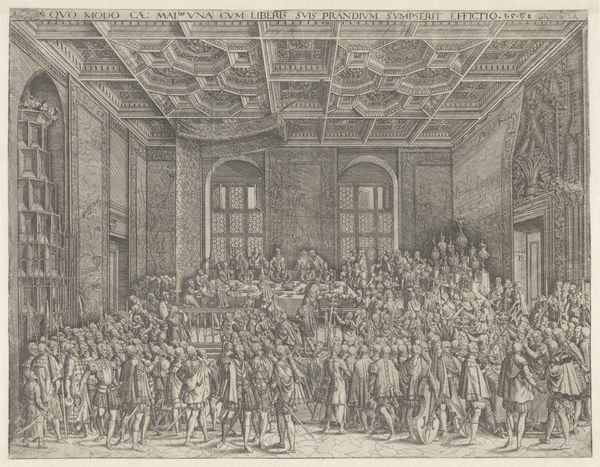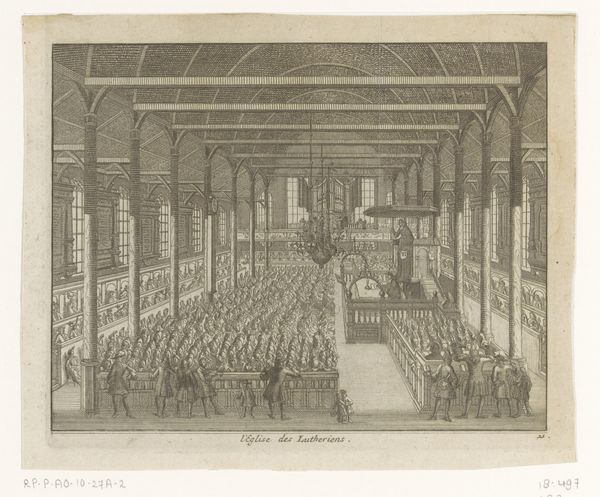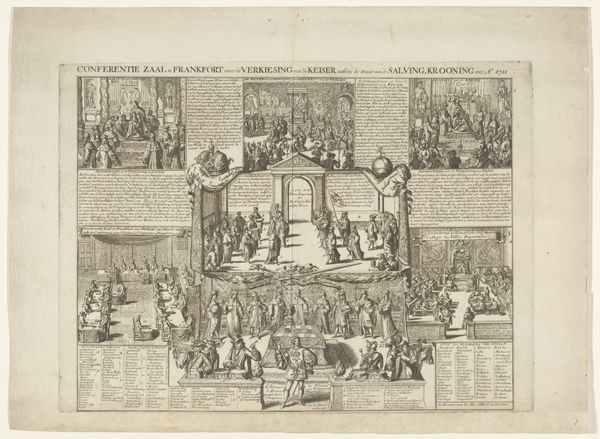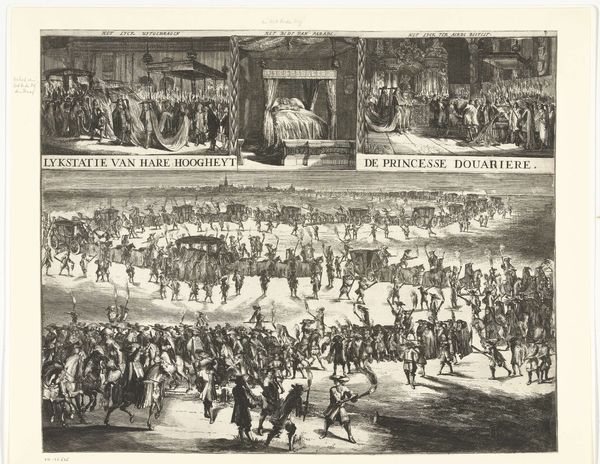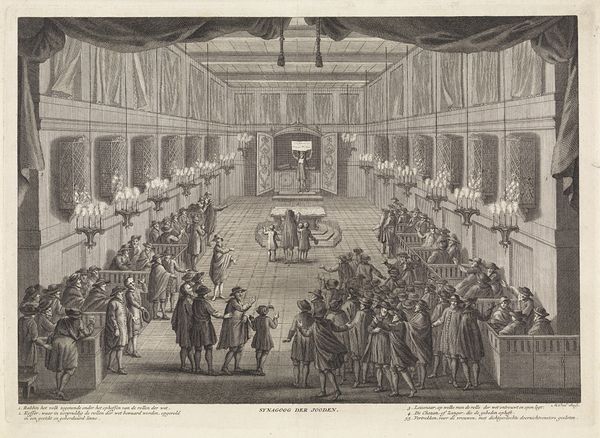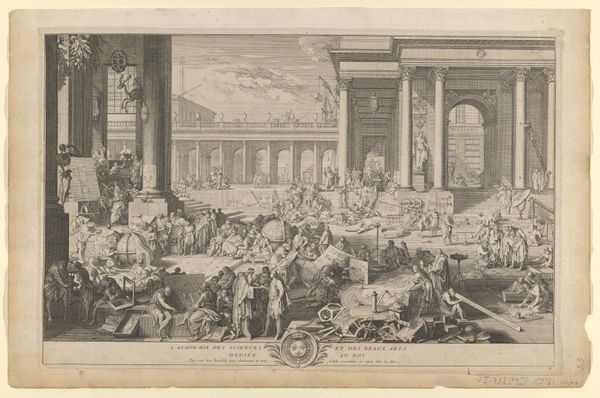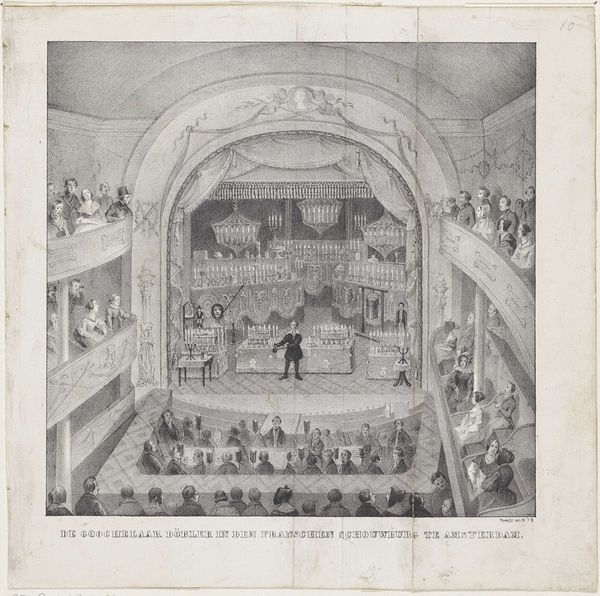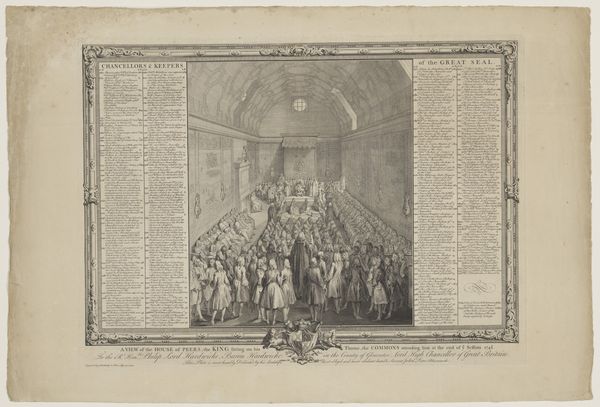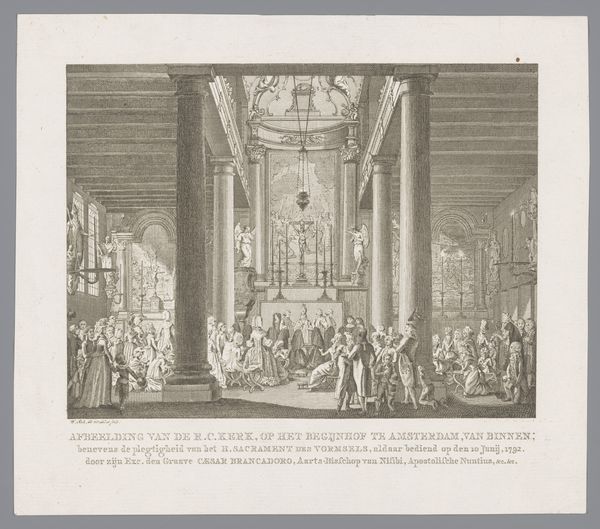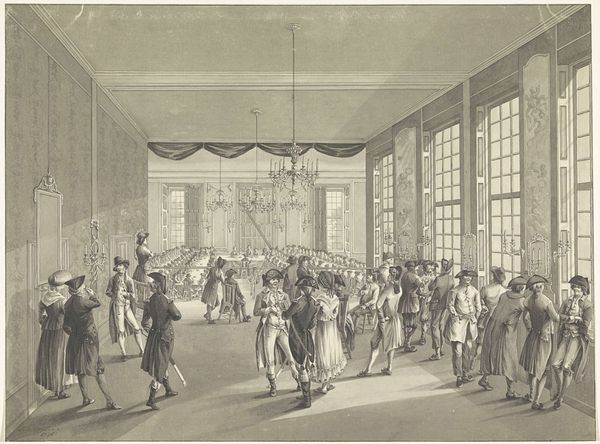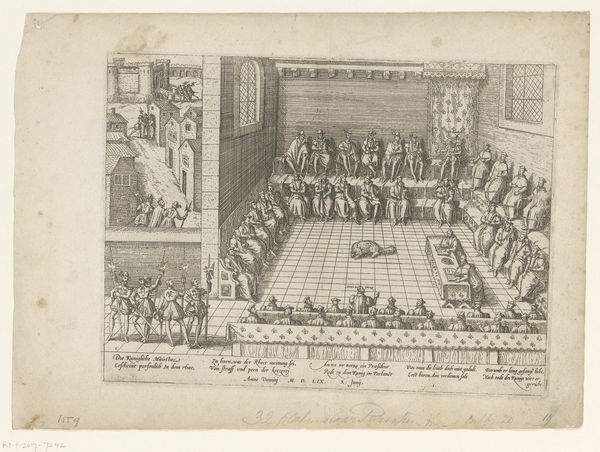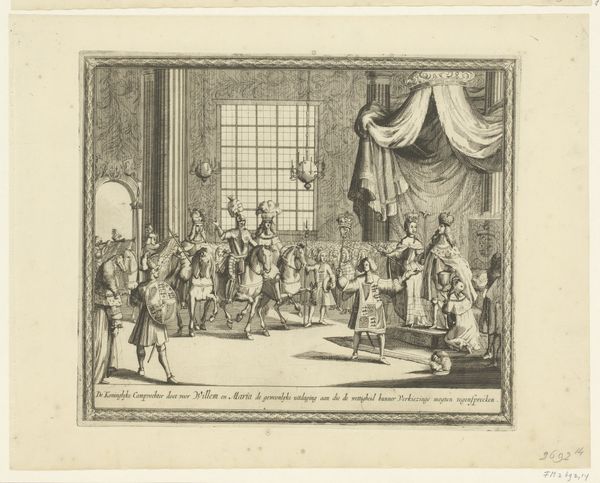
print, engraving, architecture
#
baroque
#
dutch-golden-age
# print
#
perspective
#
line
#
cityscape
#
genre-painting
#
history-painting
#
engraving
#
architecture
Dimensions: height 285 mm, width 325 mm
Copyright: Rijks Museum: Open Domain
Around 1700, François van Bleyswijck made this print, depicting the Court of Holland in session. As a print, the image is defined by its material properties. Look closely, and you can see it's an assemblage of many fine lines, which together give the impression of a bustling interior space. But don’t forget that this was achieved by pressing a prepared metal plate onto paper. As such, it belongs to a much wider world of skilled labor, and the distribution of information through printed media. It's interesting to consider the amount of work involved here. First, the engraver’s meticulous work on the plate, building up the image line by line. Then, the labor involved in printing and distributing the finished image. Finally, the whole system of the court itself, which the print depicts. All of these forms of work, from manual to bureaucratic, are intertwined, and enabled by the material processes that Bleyswijck put into motion. So, while the print might seem like a straightforward depiction, it's also a fascinating testament to the power of materials, making, and context. It challenges us to rethink the connections between art, craft, and the wider world of work.
Comments
No comments
Be the first to comment and join the conversation on the ultimate creative platform.
